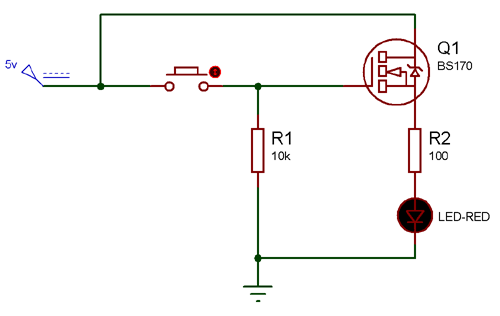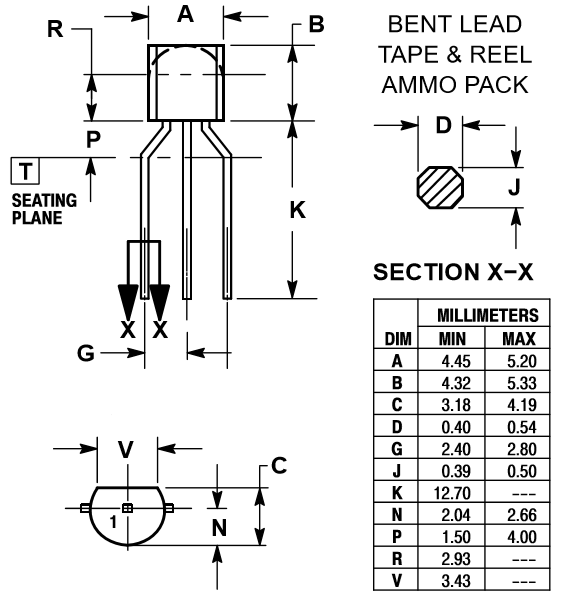BS170 - N-Channel MOSFET
Pin Configuration
|
Pin No. |
Pin Name |
Description |
|
1 |
D |
Drain terminal |
|
2 |
G |
Gate terminal, used for turn ON |
|
3 |
S |
Source terminal |
Features
- Pb-Free device
- Low offset and error voltage
- Easily driven without buffer
- High density cell design to minimize ON-state resistance RDS(ON)
- Voltage controlled small signal switch
- Particularly suits for low voltage, low current application
- High saturation current capability
- Rugged and Reliable
- Fast switching (TON = 4ns)
Technical Specification
- Drain-Source Voltage (VDS): 60 V
- Gate-Source Voltage (VGS):
- Continuous: ±20 V
- Non-repetitive: ±40 Vpk
- Drain Current (ID):
- Continuous: 500mA
- Non-repetitive: 1200mA
- Low On-resistance: 2.5Ω
- Low input capacitance: 22pF
- Lead temperature for Soldering: 300℃ (max.)
- Switching characteristics:
- Turn On time (TON): 4 to 10ns
- Turn Off time (TOFF): 4 to 10ns
- Operating and Storage Temperature Range: -55 to 150℃
Note: Complete technical information can be found in the BS170 Datasheet linked at the bottom of this page.
BS170 Equivalent MOSFET
2N7000, 2N7002, VQ1000J, VQ1000P, IRLML2502
Where to Use BS170 MOSFET?
Manufactured through DMOS technology, best suited for low voltage, low current applications like servo motor control, power MOSFET gate drivers and other switching application. BS170 used in most application which requires up to 500mA DC current. Also, used in High-speed circuits.
How to Use BS170 MOSFET?

In this circuit, we are just turning ON/OFF an LED using BS170 n-channel MOSFET. Here, the Gate and Drain terminal are connected through a 5v DC source and LED is connected to the Source. As the gate pulse applied by turning ON the switch, MOSFET conduct current through Drain to Source and LED start glowing. LED remain ON until the gate pulse applied. As the gate pulse removed LED turns OFF.
Applications
- Battery operated systems
- Solid-state relays
- Drivers: Relays, Solenoids, Lamps, Hammers, Displays, Memories, Transistors, etc.
- Direct Logic-Level Interface: TTL/CMOS
2D-Model and Dimensions












